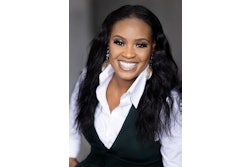It has been more than a decade since Harvard law professor Lani Guinier, and, in her wake, former President Bill Clinton, called for a national conversation on race. Clinton’s initiative died after 15 months of town hall meetings, buried by media disinterest in an event about reconciliation, rather than rage.
With the election of President Barack Obama in 2008, a conversation on race began to re-emerge, albeit in a form that was more about an imagined “post-racial” state of affairs than any reality that most Americans encounter daily.
For simple reasons—the harsh facts of demographics and economics, if not for reasons of doggedly trying to better this country and ourselves—we ask that a serious conversation on race again be attempted. This time, we ask for a conversation with attention to the kind of depth and texture invited by Guinier, who grew up with a keen awareness of the need for bridge building across America’s ravine that we call race.
As a start, we propose that the conversation begin with the faculty and students at our institutes of higher education.
Why? Because we need only look around at who is doing the talking—and where such talk is leading us. We note with some bemusement that over the decades the rhetoricians have changed, but the rhetoric has not. It was “us and them” six decades ago, and it is “us and them” today. It is only through the still largely unwritten scripts of the next generation that this country has a chance of moving forward. Our youth represent our best hope.
The concept of responsible and sustained conversations in the classroom is not new. What’s new is the urgency of the need for a fertile space for new seeds of justice to be nourished.
We are at a critical point in racial justice, as recent furors over a Muslim mosque near Ground Zero, the mud slinging between the Tea Party and NAACP, and the revolt over undocumented immigrants in Arizona have shown. In retrospect, it was not so hard to see this pathos coming: In May 2008, a Newsweek poll showed 39 percent of White voters thought we had “gone too far” in pushing equal rights.
When Obama was elected, it seemed at first that those poll numbers must have been wrong. To bolster our optimism, a USA Today/Gallup post-election poll showed 70 percent of voters thought that race relations would improve with Obama’s election.
How poorly we know ourselves. Not helped by an economic crisis and self-interested politicians, the discussion on race reverted to its basest form. Like the schools where resegregation has again reached 1960s’ levels, the rhetoric seems bent on returning us to the pre-civil-rights discourse of rabid racism. Or perhaps some would have us move to a new post-racial space of colorblindness. Neither serves us well.
By 2050, the U.S. Census predicts, Whites will be in the minority. When that time comes, we will need every bright mind we can get and the power of individual achievement in the hands of every individual possible, if we are to successfully compete in a shifting international economy.
So how do we initiate a conversation of the type Guinier envisaged: one of “reasoned talk, informed talk … talking to our public leaders and talking with fellow citizens in order to find ways to collaborate”?
Ironically, the media, which so swiftly quashed the last attempt, has provided us with an ally. With Facebook, Twitter, and chat rooms, social media give us immediate ways to extend the conversation. A meaningful discussion could start in the classroom and quickly move to the lunch, dorm, or chat rooms.
As long as college faculty choose to be silent on race, small-minded politicians, wary parents and uninformed friends will fill the void. We are only one influence. But some would argue a distinct influence. What to do? This modest list is a start:
Educate yourself so you can talk intelligently about race, as it was and as it is.
Educate your students. Bring other cultural viewpoints into class, whatever the discipline. Give them facts. Let them draw conclusions.
Acknowledge discrimination when you see it. Use it as an opportunity to educate, not condemn.
Do not ask a student to speak for his or her race. If you ask for an opinion, be clear this is an individual view—no less, no more.
Talk. If people are uncomfortable, allow them to stop feeling so by engaging in an honest, informed, civil conversation.
Be an advocate for change. Propose a conference, a club, speakers or forums to discuss issues of diversity and race.
Start the conversation. And who knows … .
Professors Dexter Gordon and Grace Livingston are chair and co-chair of the Race and Pedagogy National Conference 2010, recently held at the University of Puget Sound.















